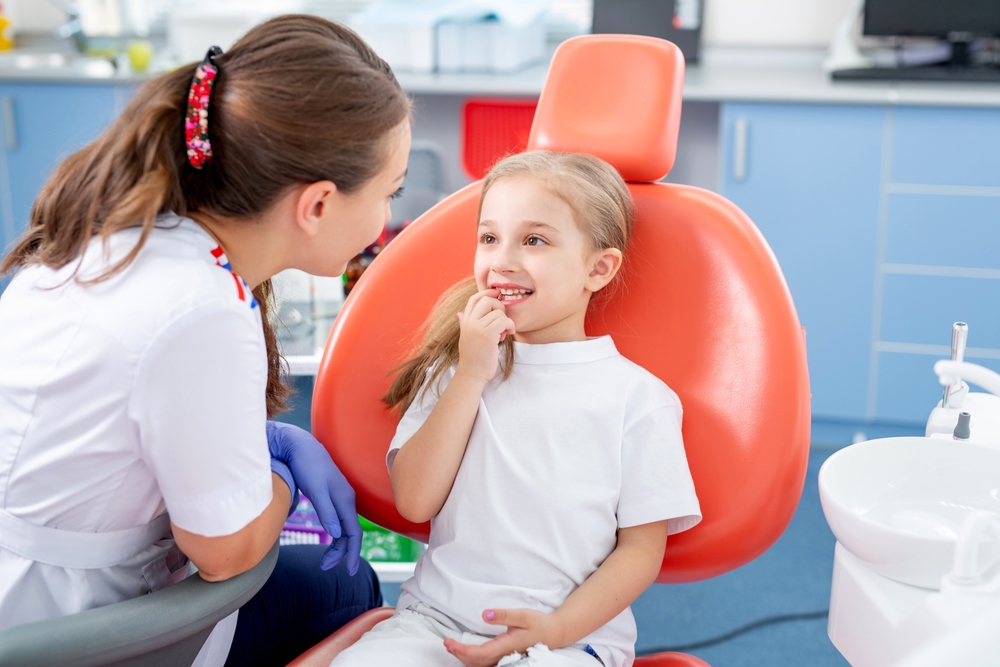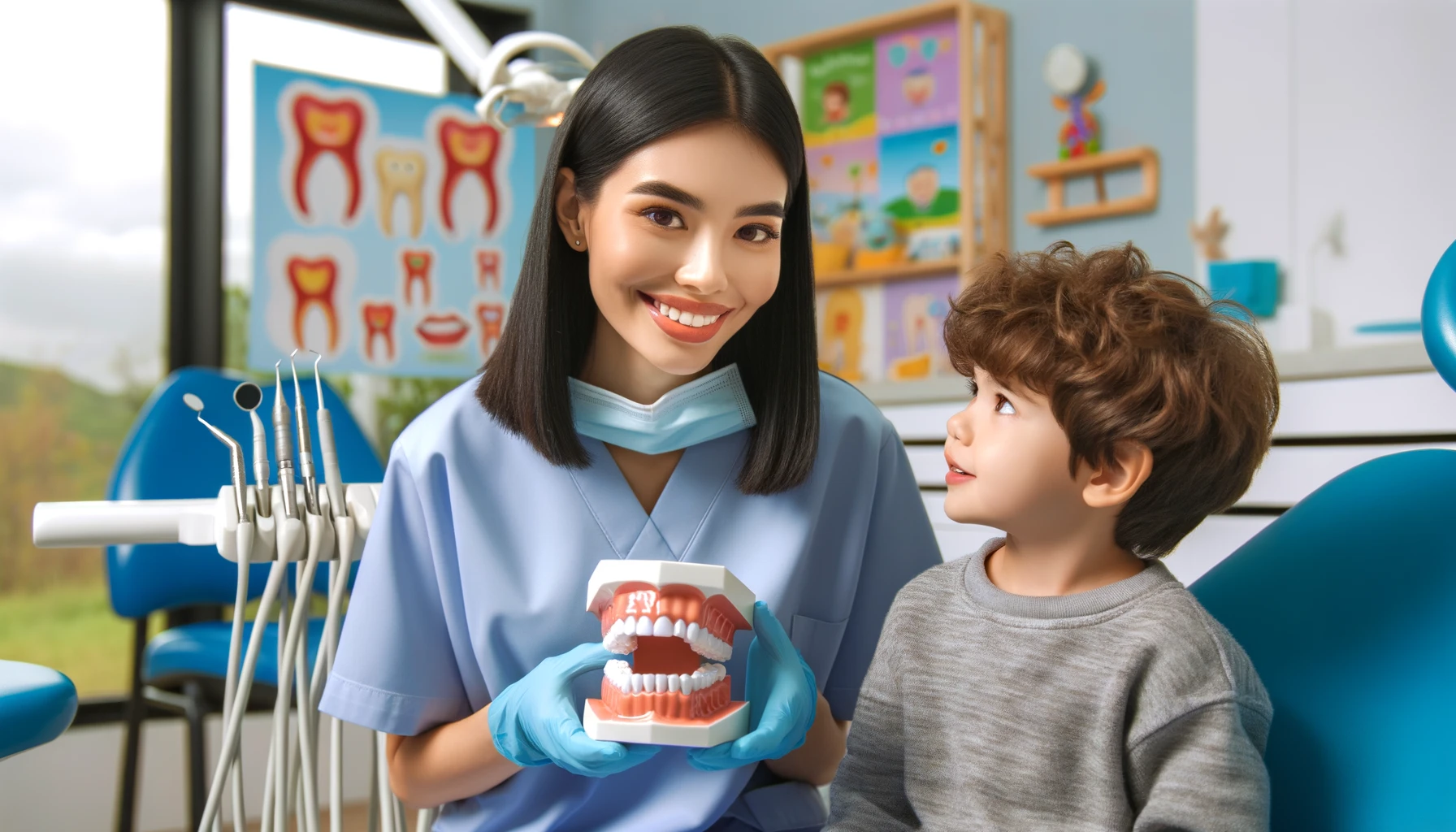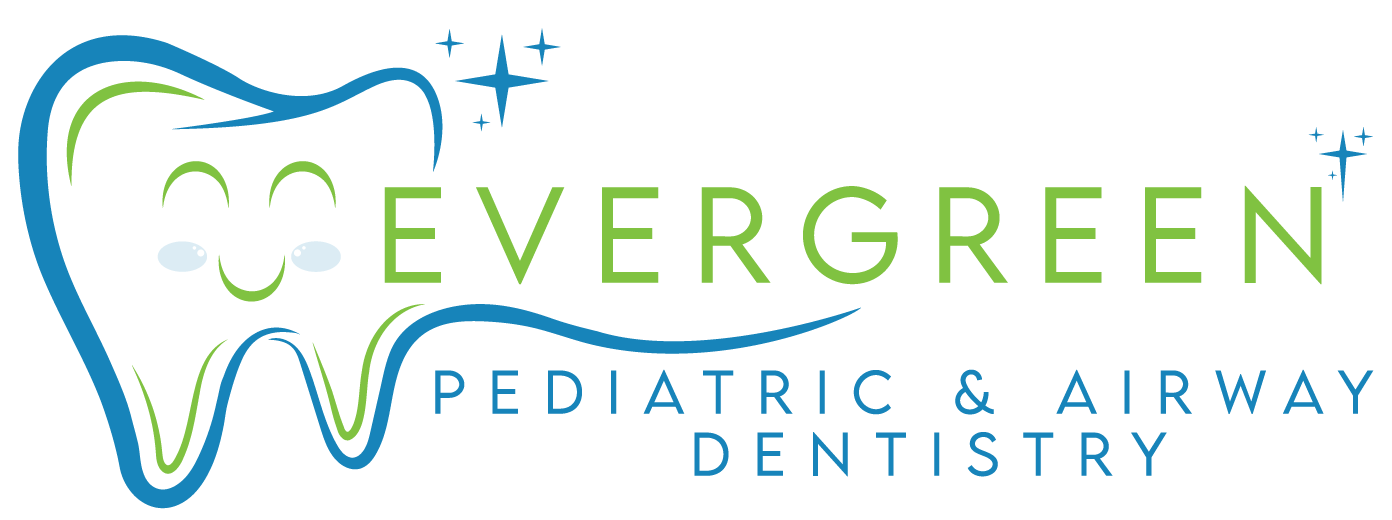The Ultimate Guide to Child Dentist Teeth Cleaning: What You Need to Know
Ensuring your child has a bright, healthy smile starts early. However, navigating the world of children’s dental care can be daunting for parents. From understanding the importance of oral hygiene to preparing for their first dental visit, there’s much to know. This blog will be the ultimate guide to child dentist teeth cleaning and will walk you through everything you need to know, so you can help your little one maintain a lifetime of healthy smiles.
Why Early Dental Care for Children is Crucial
Early dental care sets the foundation for lifelong oral health. It’s not just about having a charming smile; it’s about preventing issues that can lead to serious health problems down the road. Regular teeth cleaning is an essential part of this preventive care.
- The Role of Oral Hygiene in Children: Good oral hygiene in children is vital. It helps prevent cavities, gum disease, and other dental problems that can affect their overall health. Poor oral hygiene can lead to pain, infections, and even issues with eating and speaking. Establishing good dental habits early on helps ensure your child’s teeth and gums stay healthy.
- Preventing Cavities and Gum Disease: Cavities are one of the most common childhood diseases. They occur when bacteria in the mouth produce acids that erode the tooth enamel. Regular teeth cleaning helps remove these bacteria and prevent cavities. Additionally, cleaning below the gum line is crucial for preventing gum disease, which can lead to tooth loss if untreated.

Teeth Cleaning
What to Expect at a Child Dentist Appointment
Taking your child to the dentist for the first time can be a bit overwhelming, but knowing what to expect can help ease any anxiety. A typical child dentist appointment starts with a friendly greeting and an introduction to the dental team. The dentist will often use a gentle, reassuring approach to make your child feel comfortable.
During the examination, the dentist will inspect your child’s teeth, gums, and mouth for any signs of cavities or other issues. They may also perform a thorough teeth cleaning to remove plaque and tartar buildup. In many cases, X-rays are taken to get a more detailed view of your child’s oral health. These images help the dentist spot problems that aren’t visible to the naked eye, such as tooth decay between teeth or issues with the jaw and bones.
The dentist will also provide guidance on proper brushing and flossing techniques, tailored to your child’s age and dental needs. If necessary, fluoride treatments or sealants may be applied to help strengthen your child’s teeth and protect against cavities.
At the end of the visit, the dentist will discuss any findings with you and recommend a treatment plan if needed. They’ll also schedule the next check-up, usually six months later, to ensure that your child’s oral health remains on the right track.
Tips for Preparing Your Child for Their Teeth Cleaning
Proper preparation can make your child’s dental visit a more pleasant and stress-free experience. Here are some tips to help you get ready for your child’s teeth cleaning appointment:
- Talk About the Visit: Start by explaining to your child why visiting the dentist is important and what will happen during the appointment. Use simple, reassuring language to help alleviate any fears they may have.
- Read Books or Watch Videos: There are many children’s books and videos about going to the dentist that can help familiarize your child with the process. These resources often present the experience in a fun and friendly manner, making it easier for your child to understand and accept.
- Role-Play at Home: You can play “dentist” at home to help your child get used to the idea of a dental visit. Use a toothbrush to pretend to clean their teeth, count them, and show how to keep their mouth open wide. This can make the real appointment feel more familiar.
- Choose the Right Appointment Time: Schedule the dental visit at a time when your child is usually well-rested and in a good mood. Avoid nap times or times when your child might be hungry or cranky.
- Avoid Negative Language: Be mindful of the words you use when discussing the dentist. Avoid using words like “pain,” “shot,” or “drill” that might cause unnecessary fear. Instead, focus on positive aspects like “clean,” “strong teeth,” and “healthy smile.”
- Bring a Comfort Item: Let your child bring a favorite toy, blanket, or stuffed animal to the appointment. Having a comfort item can help your child feel more secure and relaxed.
- Stay Calm and Positive: Children often pick up on their parents’ feelings. If you are calm and positive about the dental visit, your child is more likely to feel the same way.
By following these tips, you can help ensure that your child’s teeth cleaning appointment goes smoothly, setting them up for a lifetime of positive dental experiences.

Importance of Child Teeth Cleaning
How to Choose the Right Child Dentist for Your Family
Choosing the right dentist for your child is crucial to ensuring a positive and stress-free experience that encourages good oral health habits. Here are some important factors to consider when selecting a child dentist:
- Qualifications and Experience: Verify that the dentist has the appropriate qualifications and experience in pediatric dentistry. Pediatric dentists receive additional training to handle the unique dental needs of children.
- Office Environment: Visit the dental office to ensure it is child-friendly. Look for a welcoming and calming environment with kid-friendly décor and amenities that make children feel comfortable and at ease.
- Recommendations and Reviews: Seek recommendations from friends, family, or your child’s pediatrician. Online reviews can also provide insight into the experiences of other parents and patients.
- Comfort with the Dentist: It’s important that your child feels comfortable with the dentist. Schedule a preliminary visit to meet the dentist and staff, and ensure that the dentist has a gentle and reassuring approach with children.
- Range of Services: Ensure the dental practice offers a full range of pediatric dental services, including routine cleanings, fluoride treatments, sealants, and emergency care.
- Preventive Approach: A good child dentist emphasizes preventive care and education, helping to establish good dental habits early and prevent future problems.
- Location and Accessibility: Choose a dentist whose office is conveniently located and accessible. Easy access can make it easier to keep up with regular appointments and address any urgent dental issues.
- Insurance and Payment Options: Check that the dentist accepts your insurance plan and offers flexible payment options. This can help manage the costs associated with dental care.
By taking the time to choose the right child dentist, you can ensure that your little one receives the best possible care and develops a positive attitude towards maintaining their oral health.
Common Concerns and Questions About Child Dental Care
As a parent, it is natural to have concerns and questions about your child’s dental care. Here are some common queries that many parents share, along with helpful answers to guide you:
- When should my child have their first dental visit?: The American Academy of Pediatric Dentistry recommends that children visit the dentist by their first birthday or within six months of getting their first tooth. Early dental visits help establish a dental home and allow the dentist to detect any potential issues early.
- How often should my child visit the dentist?: Children should visit the dentist every six months for routine check-ups and cleanings. Regular visits help maintain good oral health, monitor development, and catch any problems before they become serious.
- Are baby teeth really that important?: Yes, baby teeth play a crucial role in your child’s overall dental health. They are essential for proper chewing, speaking, and maintaining space for permanent teeth. Healthy baby teeth also contribute to the development of a healthy smile and jaw.
- How can I prevent cavities in my child’s teeth?: Good oral hygiene practices, such as brushing twice a day with fluoride toothpaste, flossing daily, and reducing sugary snacks and drinks, are key to preventing cavities. Regular dental check-ups and fluoride treatments also help protect against tooth decay.
- What should I do if my child has a toothache?: If your child complains of a toothache, rinse their mouth with warm salt water, use a cold compress to reduce swelling, and give them over-the-counter pain relief if necessary. Contact your dentist as soon as possible to determine the cause of the pain and receive appropriate treatment.
- What are dental sealants and does my child need them?: Dental sealants are thin coatings applied to the chewing surfaces of your child’s back teeth (molars) to protect them from cavities. They are especially effective in preventing decay in the deep grooves and pits where brushing may not reach. Your dentist can advise if sealants are a good option for your child.
- Is thumb sucking and pacifier use harmful to my child’s teeth?: Prolonged thumb sucking and pacifier use can affect the alignment of your child’s teeth and jaw. Most children naturally stop these habits on their own, but if they persist beyond age three to four, consult your dentist for guidance on how to help your child break the habit.
- What should I do if my child has a dental emergency?: In case of a dental emergency, such as a knocked-out tooth, severe tooth pain, or a broken tooth, contact your dentist immediately. For a knocked-out tooth, try to place it back in the socket or keep it in a container of milk while you seek prompt dental care.
Understanding these common concerns and questions can help you better manage your child’s dental care and address any issues that arise. Regular communication with your child’s dentist is essential for maintaining optimal oral health and preventing future problems.

Child Dental Care
Understanding the Different Types of Teeth Cleaning for Children
Proper teeth cleaning is vital for maintaining your child’s oral health and preventing dental issues later in life. Here are the different types of teeth cleaning commonly performed for children and what each entails:
- Routine Cleaning (Prophylaxis): Routine cleanings are performed during regular dental check-ups, usually every six months. These cleanings involve removing plaque and tartar build-up from your child’s teeth using specialized dental tools. The dentist or dental hygienist will also polish the teeth to remove surface stains and apply fluoride to strengthen the enamel. Routine cleaning helps prevent cavities, gum disease, and other dental issues.
- Deep Cleaning (Scaling and Root Planing): In cases where a child has developed signs of gum disease, a deep cleaning may be necessary. This procedure involves scaling, which removes plaque and tartar from below the gum line, and root planing, which smooths the root surfaces to help gums reattach to the teeth. Deep cleaning is more intensive than routine cleaning and may require multiple visits, depending on the severity of the gum disease.
- Debridement Cleaning: If a child’s teeth have a significant build-up of plaque and tartar that prevents the dentist from performing an accurate evaluation, a debridement cleaning may be recommended. This type of cleaning involves removing heavy deposits using ultrasonic instruments. Debridement is usually followed by a thorough examination and, if necessary, additional cleanings.
- Gross Debridement Cleaning: Similar to debridement cleaning, gross debridement is used when the plaque and tartar build-up is extreme and covers a significant portion of the teeth. This type of cleaning helps to remove the bulk of these deposits, making it easier for the dentist to conduct a comprehensive oral examination and determine the next steps for treatment.
- Fluoride Treatments: While not a cleaning per se, fluoride treatments are often included during dental visits. These treatments involve applying a fluoride gel or varnish to the teeth, which helps to protect and strengthen the enamel, making it more resistant to decay. Fluoride treatments are especially important for children, as their developing teeth are more susceptible to cavities.
Understanding these different types of teeth cleaning can help you ensure that your child receives the appropriate dental care at every stage of their development. Regular dental visits and good oral hygiene practices at home are crucial for maintaining healthy teeth and gums.
Conclusion
Taking care of your child’s dental health is essential for their overall well-being. Regular visits to the dentist, proper oral hygiene practices, and addressing any concerns or issues promptly can help maintain good oral health and prevent future dental problems. Understanding the importance of baby teeth, how to prevent cavities, what to do in case of a toothache or emergency, and the different types of teeth cleaning for children are all crucial aspects of ensuring optimal dental care for your child. By staying informed and communicating regularly with your child’s dentist, you can help set them up for a lifetime of healthy smiles.
Evergreen Pediatric Dentistry
https://www.google.com/maps?cid=14720788683151219551
12910 Totem Lake Blvd NE #103, Kirkland, WA 98034, United States
(425) 814-3196
https://evergreenkidsdentist.com/


